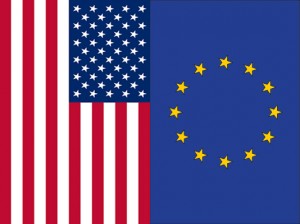 Excerpt from a joint position paper by the Commons Network, Medicines in Europe Forum, International Society of Drugs Bulletins, Health Action International Europe, UAEM Europe, and Salud Por Derecho. The full paper is posted here, under a Creative Commons license (CC-BY).
Excerpt from a joint position paper by the Commons Network, Medicines in Europe Forum, International Society of Drugs Bulletins, Health Action International Europe, UAEM Europe, and Salud Por Derecho. The full paper is posted here, under a Creative Commons license (CC-BY).
…The industry wish list includes several proposals to achieve strengthened intellectual property rules:
‘Seek patent term adjustments for patent office delays in EU’. This is a provision that extends the patent term beyond the set 20 years, to compensate for supposed ‘delays’ in the granting of a patent. In the EU there are already supplementary patent certificates (SPC) to compensate for delays in the granting of marketing authorization. Patent term adjustments extend the period of monopoly, regardless of the profitability of products, and consequently delay the availability of more affordable generic medicines. If patent terms extensions are included in the trade agreement, it becomes more difficult for the EU or the US to reform their domestic laws, including by limiting such extensions when revenues and profits are already large, relative to investments in Research & Development.
‘Seek forms of patent linkage in the EU’. Patent linkage refers to the linking of marketing authorisation for a medicine to its patent status. A market authorisation agency’s function is to assess the efficacy and safety of medicines. Linkage to patent status causes delays in generics reaching the market and generally places generic medicines at a disadvantage on the market. Regulatory authorities would only be able to start the licensing process when the patent is terminated. It is currently forbidden in the EU; the European Court of Justice has maintained that it is an anti-competitive mechanism.vii Yet apparently industry still seeks to bypass that, using trade agreements.
‘Include commitment to shared principles regarding patentability standards’. This refers to the harmonization of EU and US patentability standards. There are important differences between EU and US patentability standards. In several areas, the EU has stricter patentability standards, meaning among other things, fewer patents and more competition; key for affordability and useful innovation. Some differences concern the patentability of bioethics of life forms. There is also the difference of requirements in utility (US) versus industrial application standards (EU); utility is generally a lower standard and makes it easier to get a patent, particularly in thriving areas such as biotech innovation. So this allusion to harmonization would in practice mean: laxer standards for patentability for ‘new’ inventions, more patents and less generic competition for Europe. Industry would never push for upward (more stringent) harmonisation of regulations in the area of patentability. Although implicit, the objective in this particular case is clear when considering the context: Downgrade patentability standards in the EU and then further export this to the rest of the world, similarly to what the US is already doing in other trade agreements.
‘Extension of Data Exclusivity (DE) on biological medicinal products in EU up to 12 years (despite in US it is 4 years DE and 8 years Market Exclusivity)’. Data exclusivity may prolong the market exclusivity for the originator firms after the patent has expired. It does this by not allowing generic manufacturers to refer to the marketing authorization data when aiming to register their generic medicines. Inclusion of data exclusivity term of 12 years for biologics – avoiding reference the information available about the original clinical trials for biological branded products- would lock in this term for both the US and EU (EU currently has 8+2+1 years). Although the 12 years have not made it through the policy process in the US and President Obama proposed 7 years instead, the Office of the United States Trade Representative (USTR) has tried this same strategy in the Trans Pacific Partnership Agreement.
‘Establish a benchmark for not limiting the use of trademarks other than to protect public health’. This measure is likely to be related to the ongoing debate on using the International Nonproprietary name (INN) for biologicals, favoured by governments and the World Health Organization for public health reasons. Originator companies would rather use their trademark or proprietary name. This could limit the use of generics and of biosimilar medicines, the potential substitution by the doctor or the pharmacist – and so hampering affordability.




